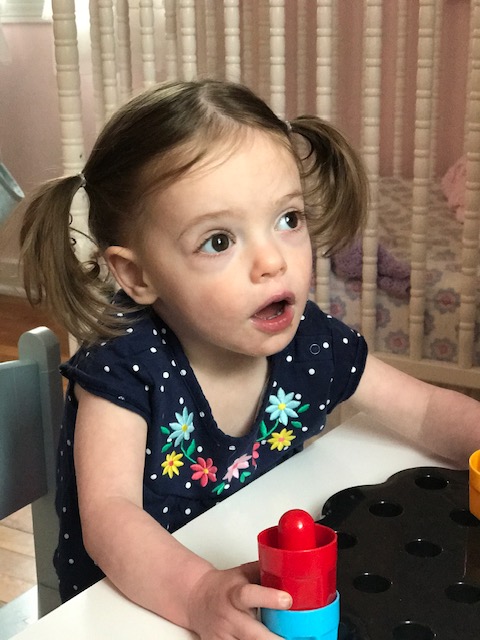Helping Toddlers with Autism Spectrum Disorder Reach their Unique Potential
For families of infants and toddlers with developmental delays and disabilities, Early Intervention (EI) is a lifeline of support. EI services build upon the natural learning opportunities that occur within the daily routine of a child and their family. A combination of developmental intervention, social work, physical therapy, occupational therapy, and speech therapy are provided based on the identified needs of the child. P.G. Chambers School’s Early Intervention program has been providing support and services to families with young children for over 40 years, reaching beyond basic services to offer child and family group opportunities as well as an assistive technology program.
Occasionally children in the Early Intervention program receive a diagnosis of autism spectrum disorder (ASD) from a medical provider. Children with ASD often require therapy with a particular emphasis on a child’s social-emotional, cognitive, and language abilities since these are the areas which are particularly affected by autism. In order to meet the needs of these children, P.G. Chambers School uses the Early Start Denver Model (ESDM) of therapy.
Children with ASD often require therapy with a particular emphasis on a child’s social-emotional, cognitive, and language abilities since these are the areas which are particularly affected by autism. In order to meet the needs of these children, P.G. Chambers School uses the Early Start Denver Model (ESDM) of therapy.
The Early Start Denver Model (ESDM) is a comprehensive, naturalistic developmental behavioral early intervention approach designed by Drs. Sally Rogers and Geraldine Dawson for children ages 12 to 60 months who are diagnosed with or at risk for autism spectrum disorder (ASD). ESDM is based on the principals of Applied Behavior Analysis (ABA), but t the specific needs of the infants and toddlers seen in Early Intervention. ESDM is based on well-researched child development learning and language development. The goals of ESDM are to accelerate children’s developmental rates in multiple areas, including cognitive, social-emotional, adaptive, and language skills. It acknowledges the sensory sensitivities a child with ASD may be experiencing. The efficacy of ESDM was initially established in an NIH-funded randomized clinical trial with toddlers with ASD, which demonstrated that ESDM resulted in significantly improved cognitive, language, adaptive behavior, and social outcomes, as well as normalized brain responses to social stimuli.
As experienced and dedicated providers, P.G. Chambers School practitioners collaborate with the child’s family and caregivers to identify their child’s verbal and nonverbal communications cues and to identify areas of interest for their child that can be used to facilitate learning, social interactions and communication. The focus on social interactions and play-based activities make ESDM particularly valuable to parents and caregivers. The strategies we use in our sessions can be incorporated into the family’s daily routines such as mealtime, bath time or bedtime. Parents, caregivers, and children develop a better understanding of each other, empowering families to connect more meaningfully with their loved ones and make daily routines less stressful.
Joyce Kwasney, MA, Clinical Coordinator of the P.G. Chambers School Early Intervention Program shared, “Finding and building on the routines and activities that capture a child’s interest and sharing authentic and joyful interactions with them are some of the most rewarding parts of my job. Even more rewarding is a child communicating and engaging more with their family and watching parents becoming more comfortable and confident in understanding their child.”
There are many resources to support children with ASD and their and families. At P.G. Chambers School, we are honored to be a partner in this important work to help children reach their unique potential. If you are concerned that a child you know is not meeting their milestones or for more information on Early Intervention, ASD, and ESDM please see the following resources:
What is “Early Intervention”? | CDC